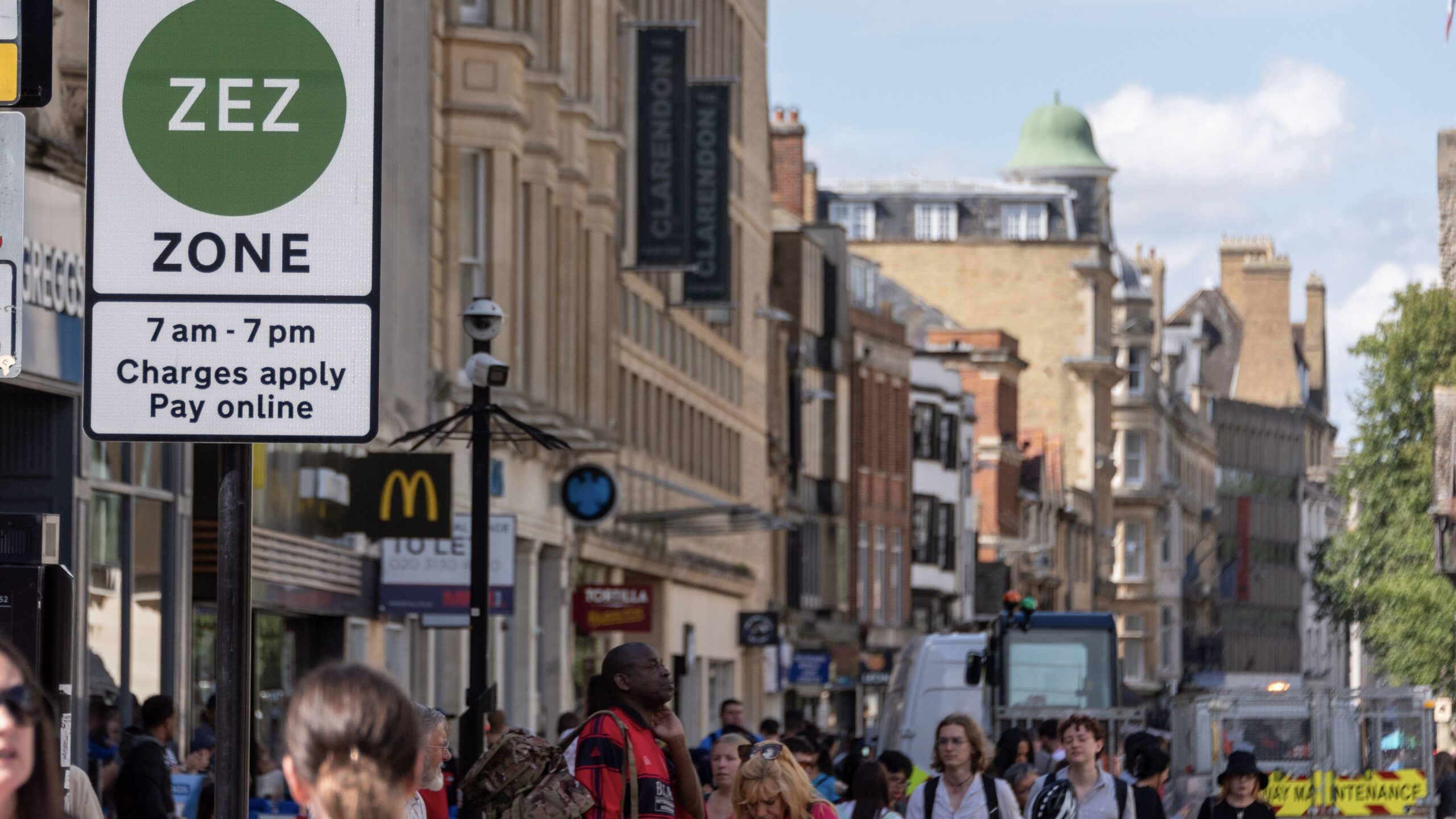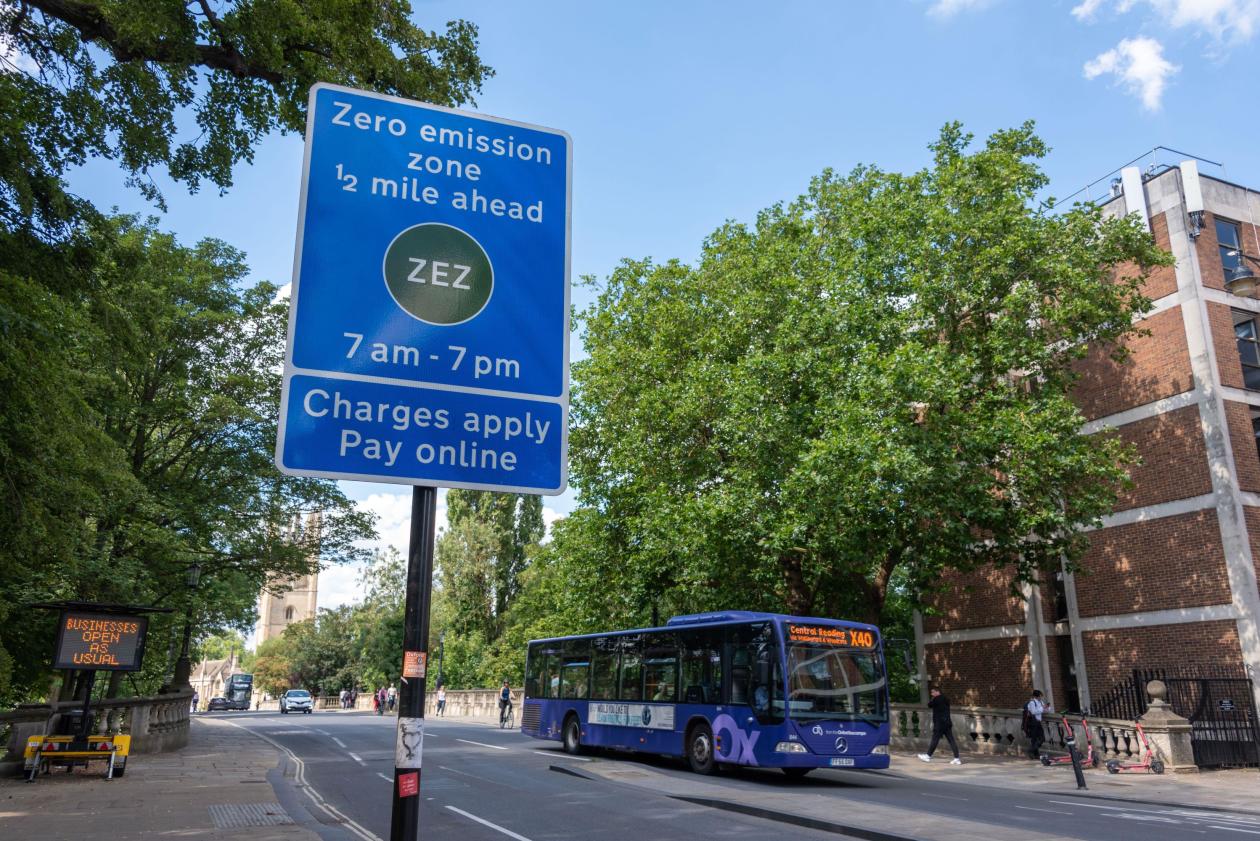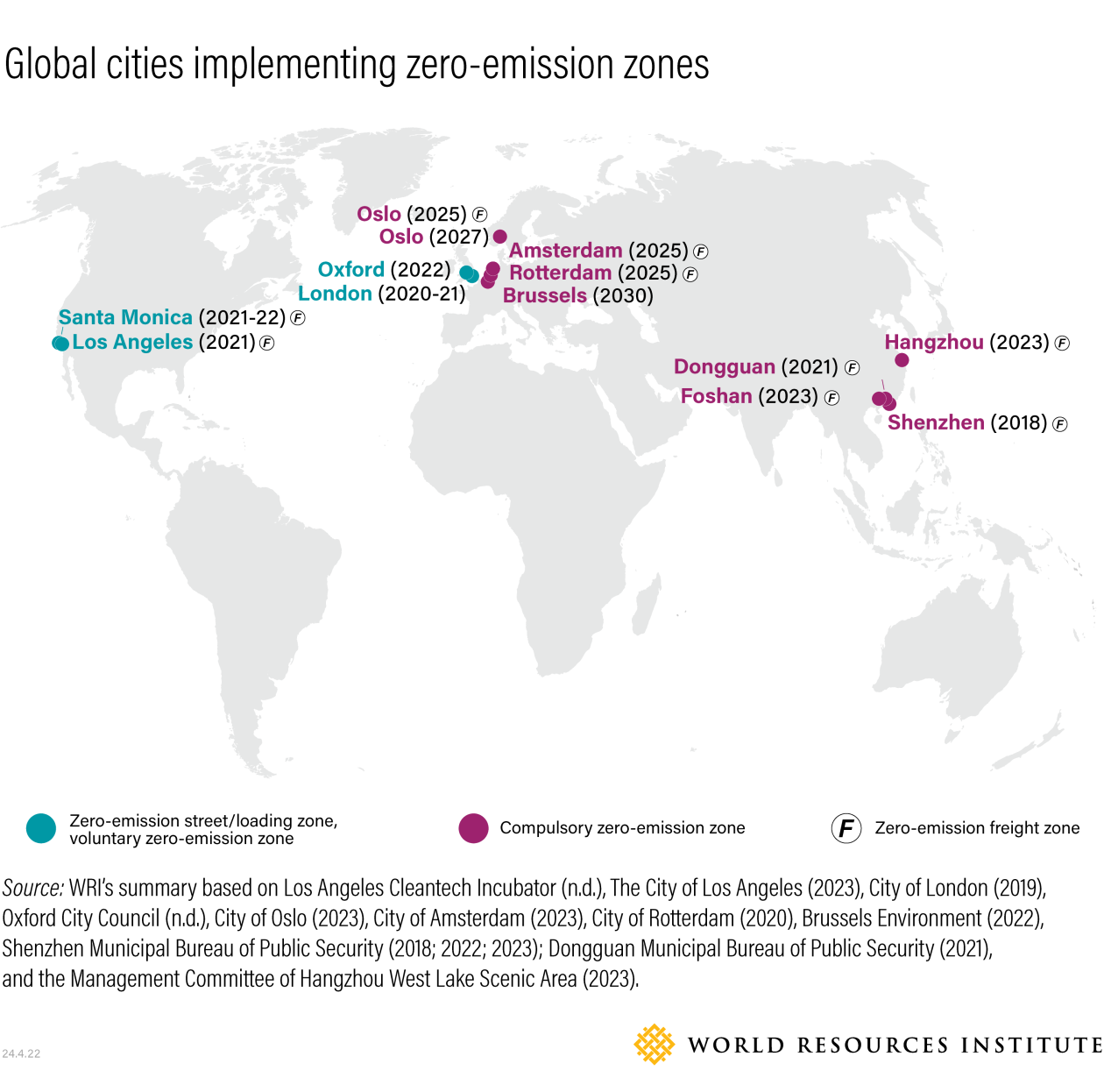Zero-Emission Zones Are Helping Some Cities Fight Pollution |
Zero-Emission Zones Are Helping Some Cities Fight Pollution TheCityFix


Zero-Emission Zones: Lessons from Cities

With growing urban populations and increases in cars, trucks, and buses, cities are poised to experience more harmful pollution threatening people’s health and livelihoods.
But some cities around the world are turning to an emerging solution called zero-emission zones (ZEZs).
These are designated small areas of about 1.5 square miles to 11 square miles inside large cities in Europe, Asia, and North America where only zero-emission vehicles (such as electric cars and trucks), pedestrians, and bikes are granted unrestricted access, with gas and diesel vehicles either prohibited or forced to pay an access fee.
What Are the Pros and Cons of Zero-Emission Zones?
The policy, which requires limited public funds, considerably reduces emissions and can bring additional environmental and economic benefits. For example, research shows that ZEZs can reduce most tailpipe nitrogen dioxide emissions from trucks — a major source of air pollution. Further, carefully-conceived ZEZs are expected to reduce the number of cars on the road making cities less congested and helping spur the market for more zero-emission vehicles.

Although city leaders often like the idea of ZEZs, they are also daunted by the possible negative socioeconomic impacts of the policy. For example, the high costs of new zero-emission vehicles or access to transportation may impact low-income residents and vulnerable groups living in the zones, who need to get to work or school. Or small freight carriers may not be able to reach their customers, disrupting the supply of food and other goods.
Overcoming Barriers: Lessons from Zero-Emission Zone Leaders
Still, even though ZEZs are still a nascent approach with some knots to untangle, several cities are beginning to implement them. A WRI report, “Feasibility of Zero-Emission Freight Zones: Scenario Analysis and Risk Assessment,” shows only about a dozen cities around the world have officially implemented or announced formal proposals to pilot ZEZs. Currently, these cities include Rotterdam and Amsterdam in the Netherlands, London and Oxford in England, Brussels in Belgium, Santa Monica and Los Angeles in the United States, Oslo in Norway, and the cities of Shenzhen, Foshan, Dongguan, and Hangzhou in China.

These early adopters have already found effective ways to implement ZEZs, offering lessons for other cities:
1) Start By Targeting Trucks
When first implementing a program, it’s more common to prioritize trucks over private cars for a couple of reasons. First, in recent years, banning gas-powered private cars from entering ZEZs (often in city centers) could have profound accessibility impacts for local residents and stimulate widespread public objection. Further, compared with the soaring market shares of electric passenger cars (22% in the EU, 35
SDGs, Targets, and Indicators
SDGs Addressed:
- SDG 3: Good Health and Well-being
- SDG 7: Affordable and Clean Energy
- SDG 9: Industry, Innovation, and Infrastructure
- SDG 11: Sustainable Cities and Communities
- SDG 13: Climate Action
- SDG 15: Life on Land
Targets Identified:
- Target 3.9: By 2030, substantially reduce the number of deaths and illnesses from hazardous chemicals and air, water, and soil pollution and contamination.
- Target 7.2: By 2030, increase substantially the share of renewable energy in the global energy mix.
- Target 9.1: Develop quality, reliable, sustainable, and resilient infrastructure, including regional and transborder infrastructure, to support economic development and human well-being.
- Target 11.6: By 2030, reduce the adverse per capita environmental impact of cities, including by paying special attention to air quality and municipal and other waste management.
- Target 13.1: Strengthen resilience and adaptive capacity to climate-related hazards and natural disasters in all countries.
- Target 15.2: By 2020, promote the implementation of sustainable management of all types of forests, halt deforestation, restore degraded forests, and substantially increase afforestation and reforestation globally.
Indicators:
- Indicator 3.9.1: Mortality rate attributed to household and ambient air pollution.
- Indicator 7.2.1: Renewable energy share in the total final energy consumption.
- Indicator 9.1.1: Proportion of the rural population who live within 2 km of an all-season road.
- Indicator 11.6.2: Annual mean levels of fine particulate matter (e.g., PM2.5 and PM10) in cities (population weighted).
- Indicator 13.1.1: Number of deaths, missing persons, and directly affected persons attributed to disasters per 100,000 population.
- Indicator 15.2.1: Progress towards sustainable forest management.
Table: SDGs, Targets, and Indicators
| SDGs | Targets | Indicators |
|---|---|---|
| SDG 3: Good Health and Well-being | Target 3.9: By 2030, substantially reduce the number of deaths and illnesses from hazardous chemicals and air, water, and soil pollution and contamination. | Indicator 3.9.1: Mortality rate attributed to household and ambient air pollution. |
| SDG 7: Affordable and Clean Energy | Target 7.2: By 2030, increase substantially the share of renewable energy in the global energy mix. | Indicator 7.2.1: Renewable energy share in the total final energy consumption. |
| SDG 9: Industry, Innovation, and Infrastructure | Target 9.1: Develop quality, reliable, sustainable, and resilient infrastructure, including regional and transborder infrastructure, to support economic development and human well-being. | Indicator 9.1.1: Proportion of the rural population who live within 2 km of an all-season road. |
| SDG 11: Sustainable Cities and Communities | Target 11.6: By 2030, reduce the adverse per capita environmental impact of cities, including by paying special attention to air quality and municipal and other waste management. | Indicator 11.6.2: Annual mean levels of fine particulate matter (e.g., PM2.5 and PM10) in cities (population weighted). |
| SDG 13: Climate Action | Target 13.1: Strengthen resilience and adaptive capacity to climate-related hazards and natural disasters in all countries. | Indicator 13.1.1: Number of deaths, missing persons, and directly affected persons attributed to disasters per 100,000 population. |
| SDG 15: Life on Land | Target 15.2: By 2020, promote the implementation of sustainable management of all types of forests, halt deforestation, restore degraded forests, and substantially increase afforestation and reforestation globally. | Indicator 15.2.1: Progress towards sustainable forest management. |
Copyright: Dive into this article, curated with care by SDG Investors Inc. Our advanced AI technology searches through vast amounts of data to spotlight how we are all moving forward with the Sustainable Development Goals. While we own the rights to this content, we invite you to share it to help spread knowledge and spark action on the SDGs.
Fuente: thecityfix.com

Join us, as fellow seekers of change, on a transformative journey at https://sdgtalks.ai/welcome, where you can become a member and actively contribute to shaping a brighter future.







